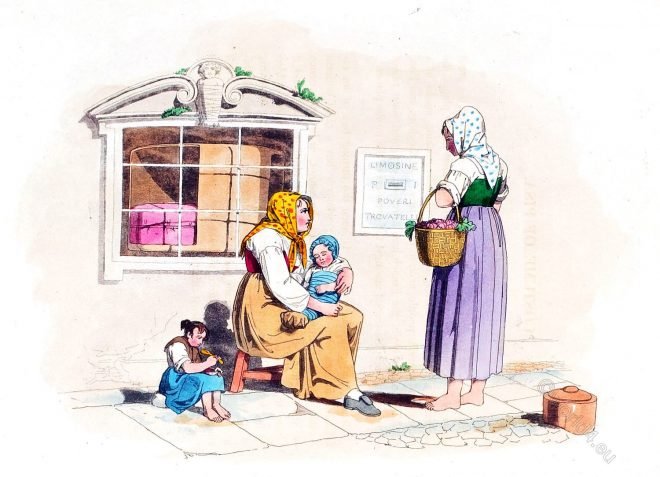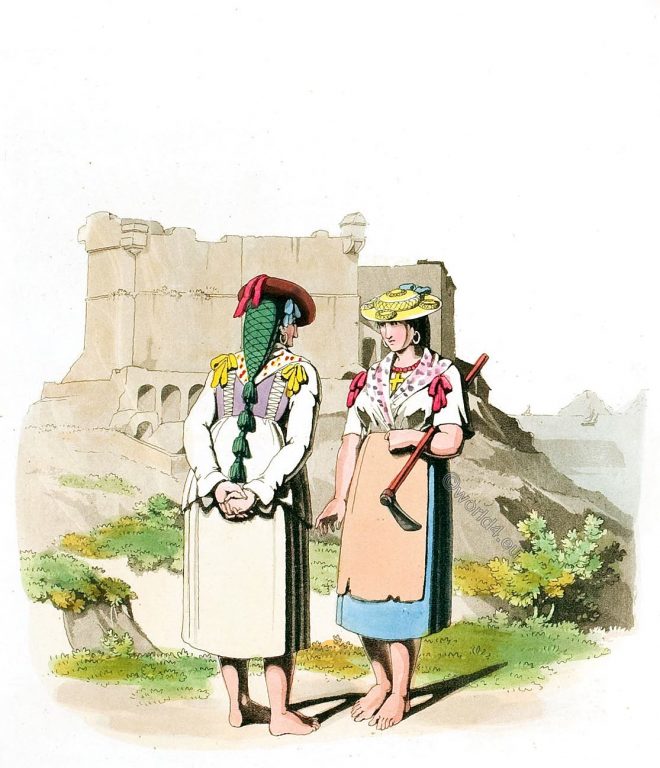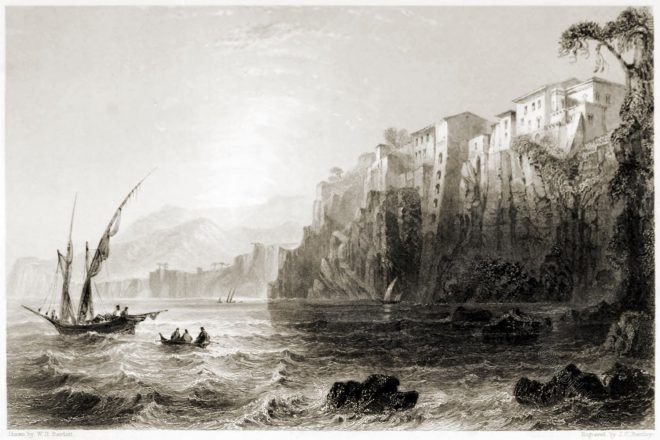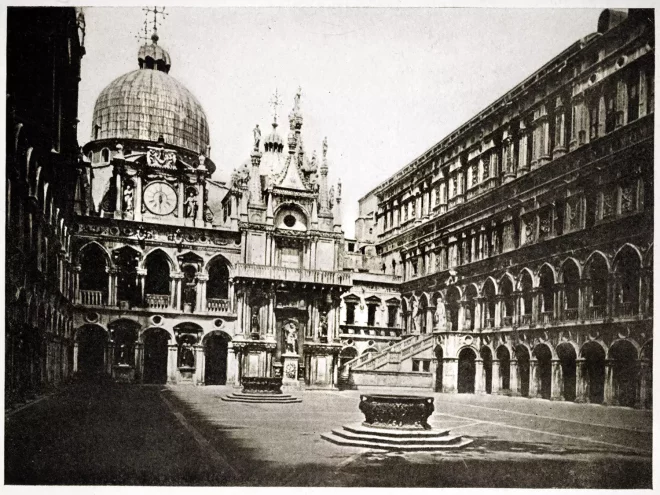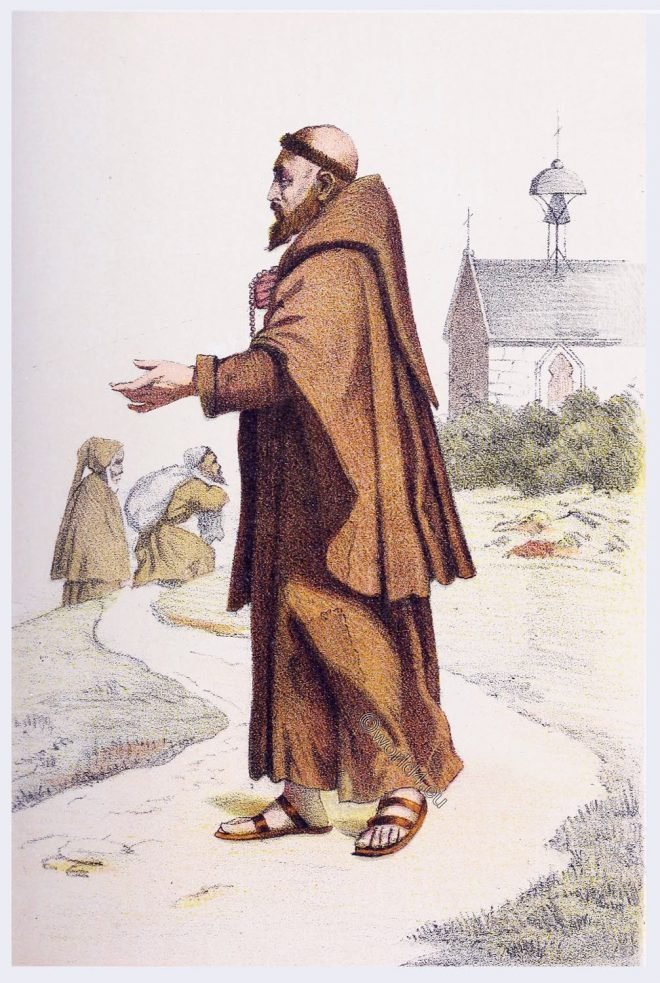The flower seller making a sales pitch, the city of Florence in the background.
Category: Italy
Locals of Pisa in typical costume in front of an orphanage.
Locals of Pisa with English neckerchief and french handkerchief in front of an orphanage.
Costume at Lerici, Italy. Percy Bysshe Shelley’s last home.
Costume at Lerici on the east side of the Gulf of La Spezia. Here were passed Shelley’s happiest days.
Sorrento, a coastal town in southwest Italy on the Bay of Naples.
For centuries, Sorrento has been the destination of northern European longing for Italy. Writers and painters have immortalised the place in words and pictures.
Florence and Fiesole, Italy. The beauty of the Val d’Arno.
Grand Tour. Florence and Fiesole, Italy. The Rhine, Italy, and Greece in a series of drawings from nature by George Newenham.
The Ducal Palace at Venice. The Palace of the Doges.
The Doge’s Palace in Venice was the seat of the Doge and the governing and judicial organs of the Republic of Venice from the 9th century onwards.
The ancient Greek city of Posidonia or Paestum in Magna Graecia.
Percy Bysshe Shelley in Italy. Temple of Neptune at Paestum. Letter from Naples. The Year 1818.
The Vatican. St Damaso with the loggias of Bramante and Raphael.
The beautiful Loggias, or open corridors, rise in three stories one above the other, each exhibiting towards the East, towards the North, and towards the West.
The Capuchins. Habit of Capuchin Friars. The spread of the Order.
The Capuchins. Mathew de Bassi. Louis of Fossembrone. Exterior Persecutuins. Internal Troubles. Bernardine Ochino. Spread of the Order. Illustrious Members. Missions in America.
Historical costume from Tresnuraghes, Sardinia. 19th century.
Costume de Tresnuraghes (Sardeigne). Colección de láminas en colo par François-Claudius Compte-Calix, 1801.


